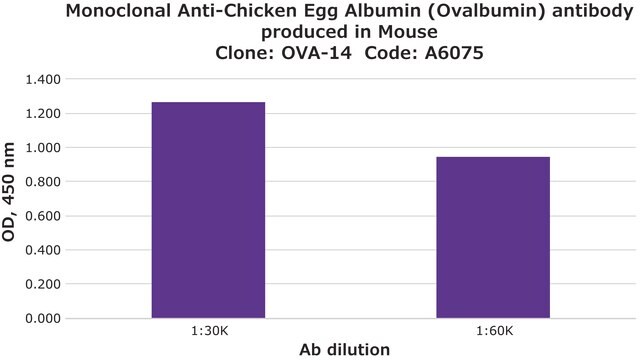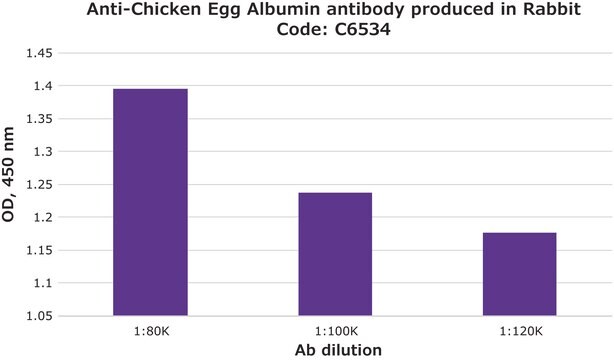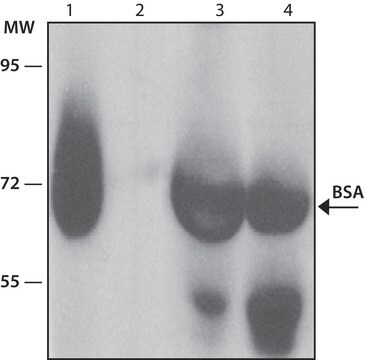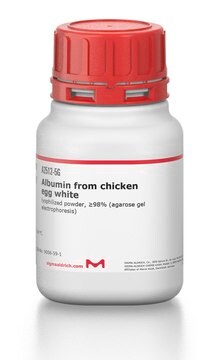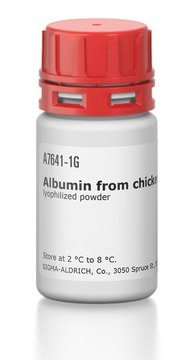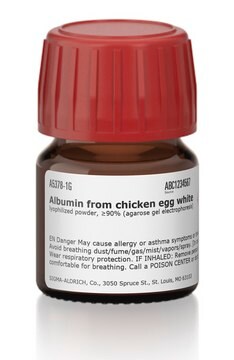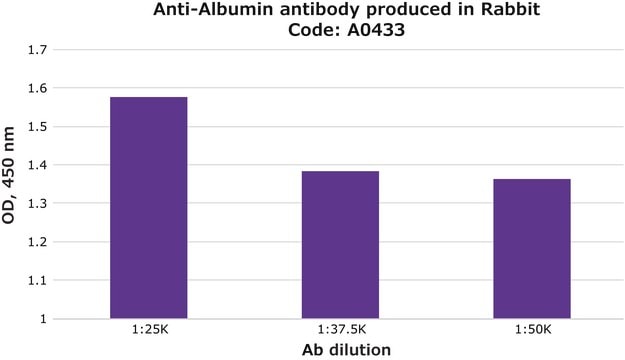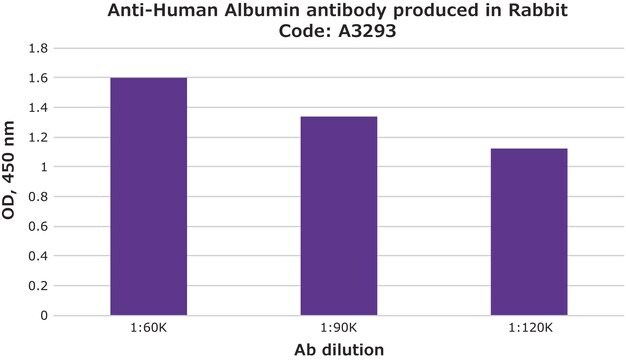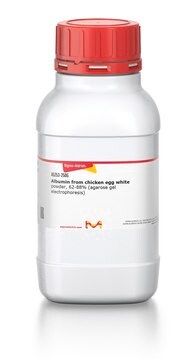SAB4200702
Anti-Chicken Egg Albumin (Ovalbumin) antibody, Mouse monoclonal
clone OVA-14, purified from hybridoma cell culture
Synonym(s):
Albumin, Plakalbumin, chicken egg
About This Item
Recommended Products
biological source
mouse
Quality Level
antibody form
purified immunoglobulin
antibody product type
primary antibodies
clone
OVA-14, monoclonal
form
buffered aqueous solution
mol wt
antigen 45 kDa
species reactivity
chicken, turkey
concentration
~1 mg/mL
technique(s)
competitive inhibition ELISA: suitable
dot blot: suitable
immunoblotting: suitable
indirect ELISA: 0.1-0.2 μg/mL using 10 μg/mL Albumin from chicken egg white (A5503) for coating.
isotype
IgG1
shipped in
dry ice
storage temp.
−20°C
target post-translational modification
unmodified
Gene Information
chicken ... Oval(396058)
General description
Ovalbumin (323-339) is the most abundant egg white protein surrounded by B-cell epitopes, which are bound by specific IgE antibodies. In addition, it also contains CD4+ T cell epitopes. Ovalbumin is a monomeric protein with a molecular mass of 45000Da.
Immunogen
Biochem/physiol Actions
Physical form
Storage and Stability
Other Notes
Disclaimer
Not finding the right product?
Try our Product Selector Tool.
Storage Class Code
10 - Combustible liquids
Flash Point(F)
Not applicable
Flash Point(C)
Not applicable
Certificates of Analysis (COA)
Search for Certificates of Analysis (COA) by entering the products Lot/Batch Number. Lot and Batch Numbers can be found on a product’s label following the words ‘Lot’ or ‘Batch’.
Already Own This Product?
Find documentation for the products that you have recently purchased in the Document Library.
Customers Also Viewed
Our team of scientists has experience in all areas of research including Life Science, Material Science, Chemical Synthesis, Chromatography, Analytical and many others.
Contact Technical Service